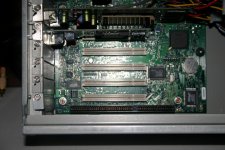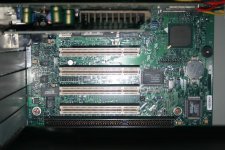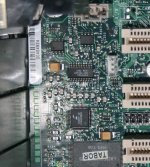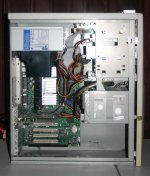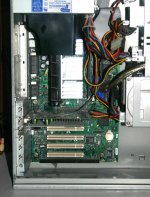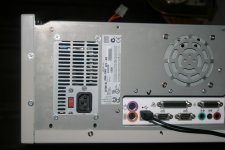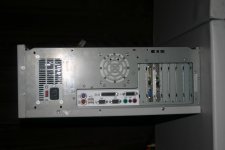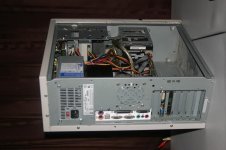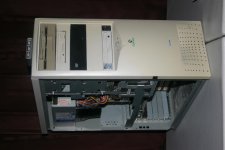OK, guys and gals... Here's what we got. :computer:
When I opened the computer to really get a good look at the Mobo, I was actually surprised at the utter lack of information printed anywhere on the board. :hammermon: The are a few things of note though : The processor is indeed an Intel P2 part No.80011627 Rev A. Then to the lower rightnear the CMOS battery is a silver sticker labeled M02C8364.
Also, from what little I know about this computer, it has three slots for the installation of RAM, but I believe it is maxed out at 128Megs. Of course, I could be wrong. The board could accept up to 256 Megs. Although I do seem to remember something about this particular system having a max supported amount at 128. The P3 will accept 1 Gig!
If you look at the photos, I have included some very niceclose-ups of the Mother boards' visible silver labels/stickers. I have also included some photos showing as much of the mother board as possible, and close up views of the visible portions ofthe board. (Actually what is visible without completely dismantling the entire computer.) I looked behind the power supply by using acouple of angled mirrors and a bright light source, and didn’t see anything else that would be of any use, so I stopped there. If there is anything on the other side of theMobo, it will have to remain there, because I don’t want to strip the computer down any more than absolutely necessary. Also, as you can see in the photos, the case is completely closed off onthe back side of the Mobo anyway, just like any other machine I have ever seen. Because of the number of photos, I will be adding as may as I can in this reply, and the rest in another response.
I’m still considering the addition of a secondary floppycontroller. :lightbulb: I guess if I add an ISA controller capable of running dual floppy drives, I’ll have to disable the floppy drive in the system BIOS too, am I correct? :crutch:Which controller should I get that will work with both 3.5” 1.44 Meg, and 5.25” 360Kb DDSD drives? And, does anyone have an extra controller I can purchase? How much would it cost me including shipping etc.? Will Ihave to stick with an 8 or 16 bit ISA controller? or is there also a PCE floppycontroller I can use in the box?
Thanks everyone; especially to you stone; :bow2: If you weren’t so persistent we wouldn’t have even this one option and I would be looking at replacing the computer.

